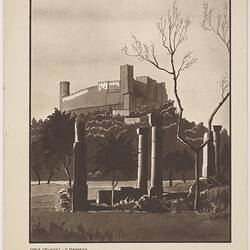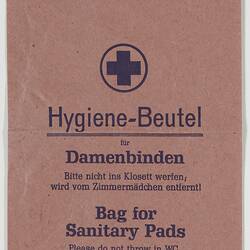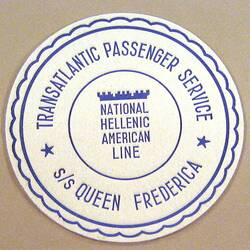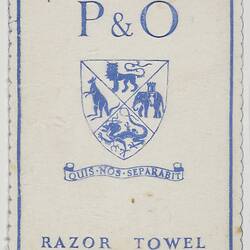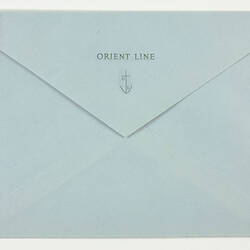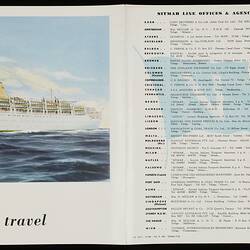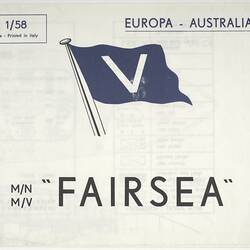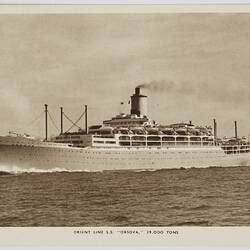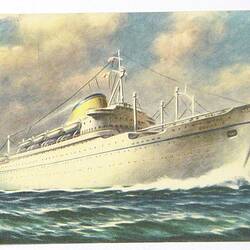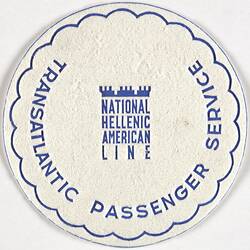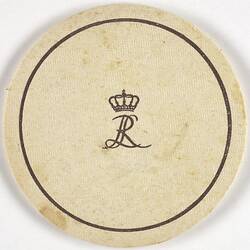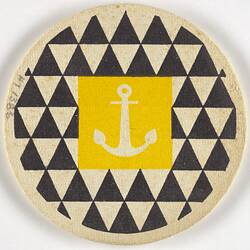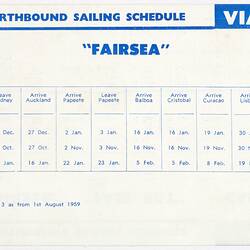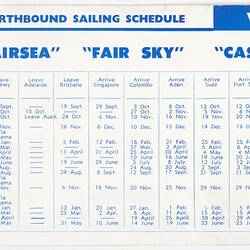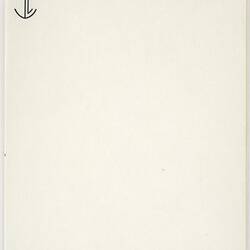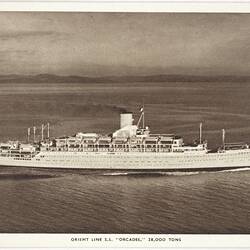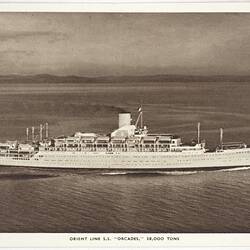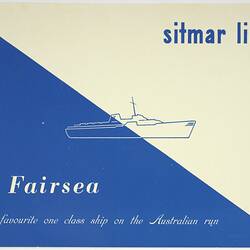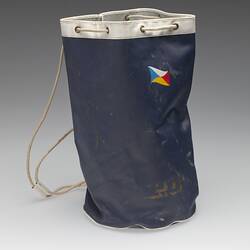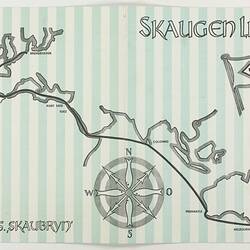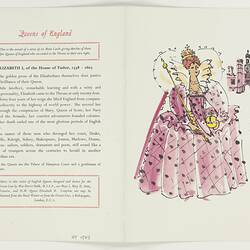Margaret Wood worked for the Department of Immigration from 1951-1961. The Department was divided into various sections such as 'Assimilation', 'Passport's and 'Naturalization'. She first worked in the Department of Alien Assimilation which focused on migrants post arrival, where she issued alien registration certificates to non-British migrants at Bonegilla Migrant Reception Centre. She then moved to the Assisted Division which handled the reception of assisted migrants arriving in Melbourne. The Assisted Division dealt with European migrants only - British migrants were handled by a separate section. She recalls a State immigration office which dealt with British migrants.
Margaret's work included meeting every ship as it arrived; checking non-British migrants for registration against a nominal roll, and making sure they received an alien registration certificate. She then sorted people into groups depending on where they were to be sent, to sponsors, hostels or employers. Then after seeing people through the customs process, she accompanied migrants with Red Cross aides on trains to Bonegilla or to other hostels such as Maribyrnong if they were a special group, such as female domestics. Margaret also worked with the baggage agents to sort the luggage into what was to be carried and what sent on afterwards and undertook general liaising, advising, providing information to migrants and other groups involved in the immigration process. She recalls that different shipping lines offered varying degrees of support to the migrants. For example the Dutch ships provided milk to mothers with babies while the old Greek ships offered nothing.
Margaret has described her frustration at not being allowed to board ships before berthing. Only men were able to climb onto the ships, so Margaret was forced to wait until the gangplank was in place. She describes the incredible amount of activity on Station Pier when a ship arrived, with immigration officials, customs officers, employment officers, photographers, baggage agents, all hustling to do their jobs, not to mention the scores of awaiting relatives. All the migrant ships arrived at Station Pier, except for later when some smaller ships docked up the river at South Wharf.
Margaret recalls the change in luggage over time, from the meagre cardboard suitcases of earlier arrivals to the larger luggage of the non-refugees such as the Dutch assisted migrants. She also remembers olive oil leaking out of bags and confiscated salamis. Much migrant anxiety revolved around luggage, with people fearing the loss of their only possessions. If luggage had been in the 'hold', it would follow the owners out to Bonegilla or wherever they were going, with 'cabin' luggage staying with them. Tradex and Stephens were the baggage agents for the Department of Immigration during Margaret's time. They tagged the luggage and transported it to the various destinations which had been decided by Margaret's division.
Ships could arrive at any time. If the arrival time was outside of normal hours, Margaret would be collected by a government car to transport her to the Pier. Otherwise she would travel to work by train from her home in Box Hill. If ships arrived at mealtimes, she would be invited on board to join people for a meal, hence the collection of menus she has kept, and she would often receive gifts from ship staff. It would take over three hours from disembarkation through customs, to securing hand luggage and boarding the train to Bonegilla. There was no siding ever built at Bonegilla station, which she recalls with amazement considering how many people went through. Upon arrival at Bonegilla, Margaret's duties were completed, and she was whisked away to staff quarters and caught the train back the next day.
She recalls now with regret that she wasn't more patient with people, considering what they'd been through. She remembers forcing people off the train at Benalla for a meal, even women who had just put babies to sleep, and wishes she had been more understanding. Most of her duties involved ship arrivals although she also handled some aeroplane arrivals during the 1950s when some migrants arrived on old American warplanes called 'Flying Tigers'. Margaret recalls the problems caused by unaccompanied baggage which was held up by Customs and meeting the survivors of the 'Skaugum' ship fire, who had been flown from Aiden to Melbourne.
Her job also entailed working with many different agencies, including the Catholic Service, European Migration and others. Margaret's office was on the sixth floor of the Craigs Building in Elizabeth Street, until the Department of Immigration relocated to the new Commonwealth Buildings on the corner of Spring and La Trobe Streets in 1958. Her section was the first to move in, hurriedly moving into offices on the ground floor to make the building appear operational for the Menzies launch. Margaret also undertook office-based work, such as dealing with the migrants who came to the offices to register changes of address, which some had to do weekly. Margaret also gave talks to community groups about her work, the migration programs and administration, including notes she made about the aid workers escorting migrants to Bonegilla.
Her final position was working for the General Assisted Passage Scheme, this involved migrants from the US, Scandinavia and Switzerland who came individually on general ships (as opposed to migrant ships). She would meet these migrants, usually groups of two or three families and single people, and assist them with the arrival process. Margaret recalls her time with the Department with great pleasure. She was a young single woman, only 20 years old when she first started. She had just finished an Arts degree at Melbourne University and applied to the Public Service. As she spoke German, she was placed with the Department of Immigration, the Department was also employing many migrants as they often spoke several languages. Margaret left when she married in 1961, as this was the policy in the public service at that time.
She describes her time with the Department of Immigration as having been exciting, diverse, interesting and busy, and that although there were opportunities for her to be promoted up the public service ladder, she never applied as she enjoyed what she was doing so much.

